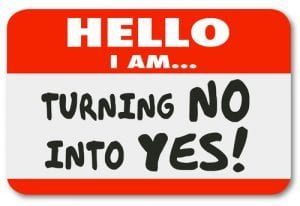
7 Construction Cold Calling Tips That Really Work [SCRIPT]
How do you cold call successfully in the construction industry?
-Prospect correctlyHow do you cold call successfully?
-Use a credibility-building cold call script
-Use the phone instead of email
-Recognize and pounce on closing signals
-Role play
-Learn to turn soft objections
-Follow up as promised
With visions of screaming prospects and hang-ups dancing in their heads, few sales reps are taking the very necessary steps to truly master the cold call.
But if you want to win at sales, it will require reaching out to people who don’t know you or why you are better than the competition.
Whether you are trying to sell your construction services or a manufacturer trying to get your products specified on the next big project, or an FF&E business, in this blog we’ll cover some of my favorite tips and tricks.
Keep reading for a sample cold call script and tips for:
-warming up the cold call
-turning objections
-holding longer conversations with prospects.
So let’s dive in…
1. Prospect Correctly
When faced with a day of dialing for dollars, nothing makes the process more grueling than calling people who have no need for your products or services.
Real sales success starts with a real investment in the research.
If you aren’t already, get familiar with the sales acronym BANT, because that’s a great place to start. While not the end all be all, a BANT framework can help flesh out the viability of a new prospect.
When looking for high-quality prospects, use the BANT framework to help you quickly assess if this target is worth the calls and follow-up.
What is BANT?
The acronym BANT stands for:
BUDGET: How much is the prospect able to spend? Is it enough to buy your solutions?
AUTHORITY: Is the prospect the TRUE decision maker?
NEED: Does the prospect have a problem your product will solve?
TIMING: Is there a sense of urgency? Why would they buy now?
Let’s break this down….
How do you know if a prospect has the budget?
Look for competitors to customers you already have. Use a tool like SimilarWeb to find competitors to your best customers.
It stands to reason that if they compete, they probably also have similar budgets.
Some firms also use employee count to estimate the budget.
If you sell B2B and have a high-cost solution, a firm with 100 employees or more is probably a better fit than if your target is one of 4 employees.
How do you know if a prospect is the decision-maker?
Use qualifying questions to make sure you have the right person on the phone.
Try asking questions like:
What’s your role in the decision-making process?
In my experience, I often work with [x title] as well. Should we invite them into the conversation?
Who typically gets the credit for introducing projects like this at your firm?
Pro Tip: Make every call count.
Even if you discover someone is not a decision-maker, work to understand who else this individual knows and how they could help usher the process along.
Be genuinely appreciative of any advice or direction.
How do you know if the prospect has a need for your product/service?
My favorite tool for this is LinkedIn.
With over 260 million active monthly users, LinkedIn has many likely buyers for your products and services.
While many use LinkedIn to find titles that they have had success with in the past, I also like to use LinkedIn to find out what jobs my prospect’s company is hiring for.
(And a good B2B prospect should always be hiring somewhere.)
If I see that the firm is hiring lots of sales and marketing folks, the company is likely in growth mode and may need to some assistance in hitting its goals.
How do you know if the timing is right?
Back to our trusty friend, LinkedIn.
Just as we used the jobs board to look for growth signals, we can also mine the company page for reasons why now may be a better time than others.
Maybe your prospect has landed a new client, or expanded into new territory, or is offering a new product/service.
If you can pinpoint one or more reasons why taking a call from you TODAY makes sense, you’ll enjoy longer conversations with your prospects.
Pro Tip: Use Google Alerts to notify you of your prospect's company news as it hits the wire. Use this news in combination with your other research as a reason for the outreach. Instant “warm call”! Share on X
2. A credibility-building
cold call script
A good cold call script will help you keep your thoughts straight, command your prospect’s attention, interest them immediately, create some desire to act, and will spur short-term action.
And one of the best ways to do that is to establish credibility from the beginning.
How do you establish credibility on a cold call?
Prove you’ve done your homework.
Then prove you’re there to help.
Today’s decision-makers are increasingly busy and are wary of calls from strangers.
Cut through the noise by proving you have done some research on their company and how SPECIFICALLY you can help them.
(Hopefully you have already identified a competitive customer or two that should make this call really shine.)
Let’s look at a cold call script that you can tweak to suit your needs.
Here’s an example cold call script for the construction industry:
“Hi Jack, It’s Matt from ABC Construction Corp.
The reason for the quick call is I wanted to congratulate you on the acquisition of those three new hotels in Florida.
I understand this increases your total portfolio to 20 hotels and that these three new properties are slated for renovation. Correct?
Congrats again!
I work with hoteliers in growth mode that sometimes struggle with renovation costs after acquiring new properties.
Are you 100% happy with the renovation estimates you’ve received so far?
No?
Tell me more about that…
So, what I’m hearing is that you’re afraid you won’t have as much money to do the renovations as you’d like which means your revenue per room could suffer.
You know, we just saved [competitor] close to 13% on their last renovation through some lesser known workarounds, without skimping on quality.
Would it make sense to explore this a bit further?
Why this works:
- I used research to help my credibility. I’m a stranger after all.
- Once I know I can, I positioned myself as someone who can help, based on what I know of their situation. This also lets prospects know you’re worth their time.
- I asked them to tell me their thoughts and then I repeated back the areas I saw there was pain to confirm my ability to help.
- Finally, I used a soft close to gauge interest. You can’t set the appointment until there is interest.
And remember, just because you have a script, it doesn’t mean you want to sound scripted.
Keep it conversational.
3. Phone is better than email
It is tempting when you have a prospect’s email address to send them a quick note asking for the appointment.
Sometimes these can work if they are already familiar with your firm…
But, if it’s easier for you to send them an email, it’s probably just as easy for them to ignore it, delete it, etc.
Instead, do what you can to reach your prospect (by phone) even if it’s off-hours.
If your competition is dialing from 8 to 5, then you need to take some time to dial before 8 and after 5.
Some of my best calls were generated after 6 PM and before 8 AM.
Why?
Decision-makers are busy going the extra mile.
Do the same to try and reach decision-makers at odd times when your competition is likely slacking.
4. Recognize and pounce on
closing signals
So, you’ve gotten this far and you haven’t been hung up on.
Now let’s make sure you don’t talk yourself out of an appointment.
When calling, remember to check in with the prospect for confirmation that a concept or idea has been heard and understood before advancing to the next point in your conversation.
Try using phrases like:
“Does that make sense?”
“Do you see how that could help solve your problem?”
“Any questions about that?”
These check ins also provide a critical break in the conversation where the prospect can tell you that they are interested.
But they’ll hardly ever tell you they are “interested”.
Instead, they may say something along the lines of:
“So how does it work?”
“Who else is doing this?”
“Do you have any case studies or whitepapers to share?”
At this point it is important to STOP pitching.
Questions don’t come from disinterested people.
So remember to just answer the question, then ask for the appointment or the sale.
If they have further questions they will ask.
Any extra talking can easily muddy the waters and undo all the work you just did.
5. Roleplay

It still surprises me that so many sales reps tasked with making a hundred calls a day never practice ahead of time.
They pick up the phone and waste the best calling hours of the day “getting warmed up” when they could have been warmed up on their very first call.
Find a partner in the office to practice pitch for at least 10 minutes.
This builds confidence, gets the marbles out of the mouth and helps uncover any weak areas.
Practice recognizing closing signals, active listening and the ability to repeat back customer pain points.
When roleplaying, be sure to practice turning soft objections. More on this below.
Pro Tip: If you don’t have a partner to role play with, just record yourself on your voicemail.
Review your pitch for too many vocal crutches (ums or ahs), pacing and how well you deliver your value proposition.
You should be able to hear yourself smiling on the recording.
If not, smile more when you practice and in real conversations. It can make a big difference.
6. Learn to turn soft objections
There are two types of nos you’ll run into when on the phone.
Hard nos which usually mean, “No way!”, “No how!”, “Not ever!”
Then there are soft nos.
A soft no is something like:
“I’m not sure if this is right for me”
“I don’t see the value yet”
“I’m not sure how this could work…”
Soft nos leave room for some soft pushback.
Sales guru Jeffrey Gitomer in his classic book
The Sales Bible, mentions using a technique called
“Feel, felt, found” to turn soft objections.
It goes something like this:
“I know how you feel Ms. Prospect, a lot of our current customers felt the same way at first.
What they found was that a quick call is the best way to understand if we can save you 60 percent or more on your hotel renovation costs.
We can cut the call short the second you feel we can’t help.
What time is best on Friday—morning or afternoon?”
You won’t win them all, but if you turn just 1 of every 10 soft nos into a yes, your appointment setting—and consequently your closing ratio—will jump dramatically.
7. Follow up as promised
Did you promise to send some stats, a sell sheet, a case study or a whitepaper to a prospect?
Make sure you do it.
When trying to convince a prospect that you are trustworthy, actions speak louder than words.
You will be judged not just on whether your product or service accomplishes what you said it would, but also if YOU are accomplishing what you said you would.
Remember, your prospect is still getting to know and trust you.
Make sure you aren’t giving them reasons to blow you off.
Pro Tip: When following up with prospects that requested a call back weeks or months from the initial contact, make sure to reference your notes.
If you can weave your prior conversation into your follow up, that further establishes you as an organized, consultative sales professional that takes the job seriously.
When so many do not, it’s this attention to detail that makes a big impact.
Conclusion
To sum things up, if you want to master the cold call it should be a well-planned and orchestrated effort.
And with a little practice, it can be far less scary and far more productive than you could have ever imagined.
Through some simple research and a dedication to HELPING your prospect, you’ll be rewarded with relationships built on trust that will earn you sales for years to come.
Want to learn more about how BuildCentral’s construction data can take your prospecting and lead generation efforts to the next level?
Call us at 866-316-5300 or grab a free trial and we’ll show you how to find prospects at the time they are most likely to buy.
Construction Cold Calling Tips?
Prospect the decision-maker and understand their company enough to have a conversation that shows your knowledge.
Was this blog helpful?
Sign up to receive B2B sales tips, tricks and best practices delivered to your inbox.








